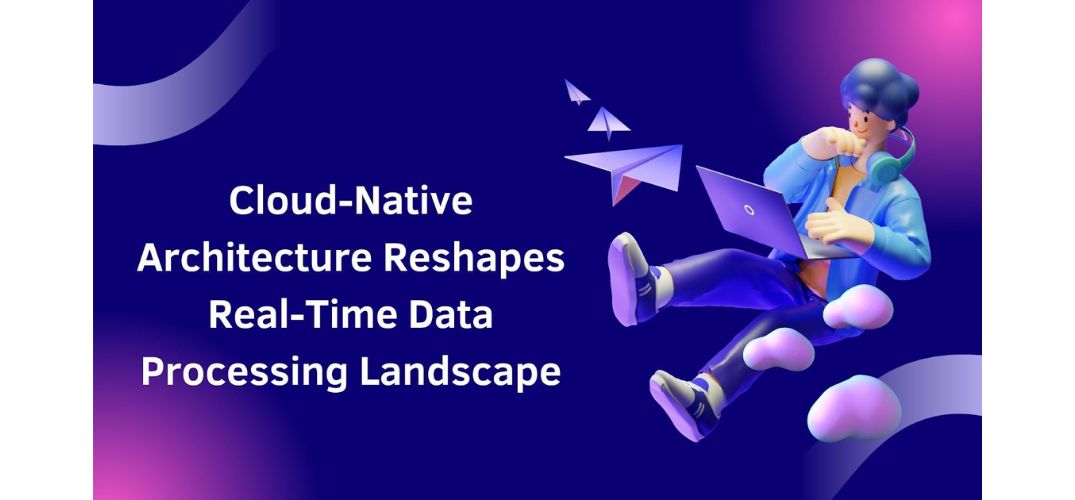In a groundbreaking research paper published in the International Journal of Scientific Research in Computer Science, Engineering and Information Technology, Sai Manish Podduturi provides comprehensive insights into cloud-native microservices architecture. Currently working in the financial sector, His analysis reveals significant advancements in real-time data processing capabilities.
The Digital Data Explosion
By 2025, global data creation will surge to 163 zettabytes – a tenfold increase from 2016. This unprecedented growth is pushing traditional systems to their limits, demanding revolutionary solutions for data processing. As organizations grapple with this digital explosion, where 20% of data is vital for daily operations and 10% demands real-time handling, cloud-native architectures are emerging as the key solution. This shift marks a critical evolution in how businesses process and manage their expanding digital footprint.
Revolutionary Performance Metrics
Cloud-native architectures are setting new benchmarks in operational performance, with organizations experiencing dramatic improvements in their systems. Studies show a 76.3% boost in application scalability alongside a 71.8% decrease in processing delays compared to conventional systems. The impact is particularly striking in transaction processing, where institutions now handle over 100,000 transactions per second while maintaining ultra-low latency under 10 milliseconds – a significant leap forward in processing capabilities.
Microservices: The New Building Blocks
The microservices architectural pattern has revolutionized modern software development, delivering transformative results across organizations. Studies reveal significant improvements, including a 74% drop in inter-service dependencies and 42% better system maintainability. The implementation of standardized API contracts has further enhanced efficiency, reducing integration errors by 67% and boosting service discovery effectiveness by 58%. These advancements mark a fundamental shift in how applications are built and maintained.
Containerization Revolution
Container technology has revolutionized application deployment, reducing deployment time by 71% while improving resource utilization by 58%. Standardized container images ensure consistent application behavior across different environments, leading to an 84% reduction in configuration-related errors. Development teams using containers spend 66% less time debugging environment-related issues and achieve a 73% improvement in deployment success rates.
Smart Orchestration
Advanced scheduling capabilities in container orchestration have transformed workload management, achieving 93% optimal resource distribution across nodes and resulting in a 51% improvement in overall cluster efficiency. Automated remediation capabilities successfully handle 89% of common failure scenarios without human intervention, reducing system downtime by 76%.
Event-Driven Architecture Innovation
Organizations implementing event-driven patterns have achieved unprecedented improvements in real-time data handling. Systems now achieve an average event processing rate of 75,000 events per second, with latencies consistently remaining below 25 milliseconds across distributed systems. Event brokers process an average of 850,000 messages per second with 99.999% delivery reliability.
Serverless Computing Breakthrough
The emergence of serverless computing has led to a 68% reduction in operational costs while improving resource utilization by 79%. Organizations report eliminating approximately 1,500 hours of monthly infrastructure maintenance tasks through serverless implementations, with automated scaling mechanisms handling traffic variations from 10 to 150,000 requests per minute while maintaining consistent performance.
Advanced Monitoring and Observability
Modern monitoring systems now enable the prediction of 89% of potential failures before they impact end users. Organizations implementing real-time health checks process an average of 1.5 million metrics per minute, achieving 99.999% monitoring coverage while maintaining alert accuracy rates above 95%. AI-powered detection systems successfully identify 94% of anomalies before they cause service degradation.
Design Principles Evolution
Organizations implementing clear design principles experience an 84% reduction in deployment failures and a 71% improvement in service maintainability. Service discovery patterns have reduced lookup times by 92% and improved overall system reliability by 76%, with systems processing over 45,000 service discovery requests per second at 99.999% accuracy.
In conclusion, cloud-native architectures are becoming increasingly critical as global data volumes continue to expand exponentially. The convergence of AI-driven monitoring, advanced serverless computing, and sophisticated event processing capabilities suggests a transformative future for data handling. As Sai Manish Podduturi emphasizes in his research, organizations that embrace cloud-native practices are positioning themselves at the forefront of innovation, equipped with the agility and processing capabilities essential for success in our data-driven era.



































